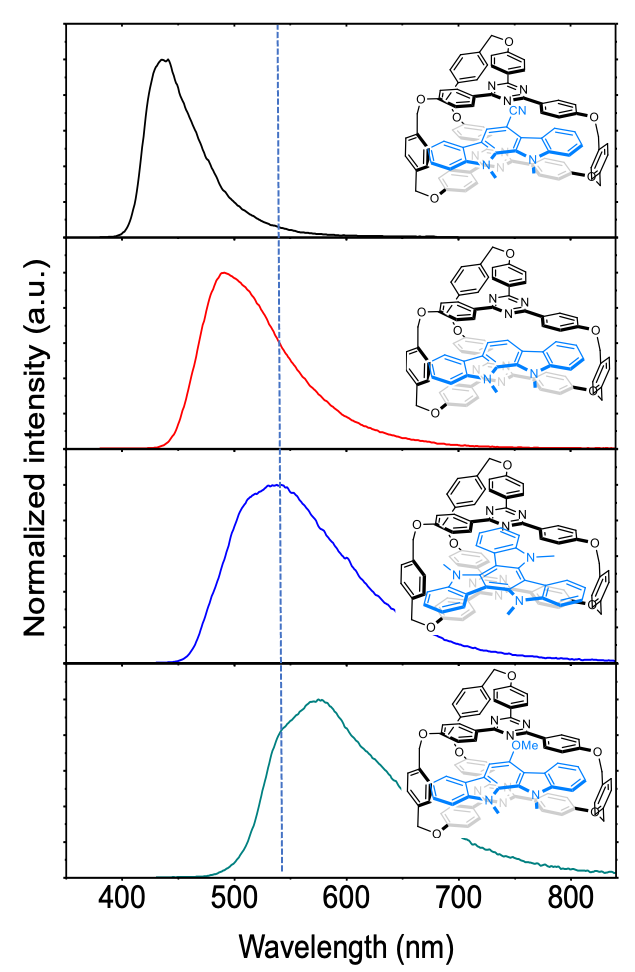
The NTU Chemistry team developed a new cage-like acceptor (Trz-cage), which can react with a donor molecule (TrMe) to form an inclusion complex (TrMe@Trz-cage). The supramolecular complex formation was an entropy-driven process by the extrusion of three CH2Cl2 molecules inside Trz-cage with one Tr-Me molecule.
Organic light-emitting diode (OLED) displays in mobile phones, computers, and TVs enliven our daily lives. With support from the National Science and Technology Council (NSTC), Prof. Ken-Tsung Wong and Pi-Tai Chou of NTU’s Department of Chemistry unveiled a new supramolecular approach, opening a new possibility for developing low-cost, high-efficiency OLED devices. This research result was published in the high-impact international scholarly journal, Nature Chemistry (January 2024), attracting widespread attention in the academic community.
Today, the popularity of OLEDs is limited, in part owing to the cost of the precious metal content in light-emitting materials, such as iridium. To fully utilize the advantages of OLED displays, the research tested a technology called "thermally activated delayed fluorescence" (TADF), which efficiently converts electrical energy into light energy. However, a key challenge is to understand the relationship between the structure and photophysical properties of organic materials: only in this way can the cost of OLED production be reduced while improving its efficiency.
The NTU Chemistry team tried an innovative strategy by designing and synthesizing a highly symmetric cage-like host molecule (Trz-cage) with electron-accepting property. Then, a guest molecule (TrMe) with electron-donating property was placed into the host cage, creating a new supramolecule (TrMe@Trz-cage). Detailed X-ray analysis of the grown single crystal confirmed that TrMe was captured inside the Trz-cage. The team also found that the assemblage of this supramolecule is an entropy-driven process, leading to a new understanding of the “exciplex” formation mechanism. The team’s photophysical studies confirmed that the TrMe@Trz-cage exhibits TADF characteristics, which can be utilized to fabricate high-efficiency OLED devices. Moreover, guest molecules with different electronic and structural properties can be placed inside the cage to fine tune the emission color of the supramolecule, making the lighting application of this new framework more versatile and flexible.
Overall, the new system developed by the NTU Chemistry team opens the way to a new understanding of the thermodynamics of exciplex formation, as well as detailed photophysical dynamics. This unprecedented result liberates “exciplex” from previous knowledge constraints on the interactions between molecules, laying an important foundation for future applications of exciplex in OLED.


